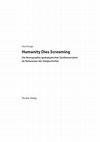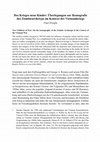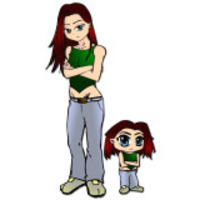Drafts by Paul Drogla

The New Children of War. Considerations about the iconography of the zombie archetype in the cont... more The New Children of War. Considerations about the iconography of the zombie archetype in the context of the Vietnam War: The modern zombie emerged in 1967/68 under the influence of popular culture and the visual presence of the Vietnam War. As a complement to the recent state of research the text elaborates on zombie iconography as an anti-war allegory. Based on George A. Romero's archetypal NIGHT OF THE LIVING DEAD (USA 1968), it is pointed out in which way the everyday images of war shaped the history and imagery of the film and influenced both the depiction and characteristics of the zombie. Using scene investigations of burning people, crisis reporting in the media, the Search and Destroy missions and the memorable image of the headshot, the impact of war is demonstrated and proven with a large number of parallels found in press photographs and war reports. On the one hand, this allows to classify the subtext of the film within the tradition of the anti-war film. On the other hand, the allegory of wars and crises can be seen as an inherent and iconographic part of that movie monster, which, in the genre, has been proven more often since Danny Boyle's 28 DAYS LATER (UK 2002).
Auf Basis der Signaturfunktion des Director-Cameos, wie er vornehmlich durch Alfred Hitchcock bek... more Auf Basis der Signaturfunktion des Director-Cameos, wie er vornehmlich durch Alfred Hitchcock bekannt wurde, wird die bisweilen selbstreflexive und selbstinszenatorische Dimension dieser Auftritte erarbeitet. Anhand von Roman Polanski, Martin Scorsese und David Cronenberg zeigt der Text die Schöpfergeste der Regisseure auf, die sich als aktiver Eingriff in das Werk und dessen Figuren offenbart.
Conference Presentations by Paul Drogla
Thesenzusammenfassung zur Fortschreibung apokalyptischer Ikonografien in Zombienarrativen nach 9/... more Thesenzusammenfassung zur Fortschreibung apokalyptischer Ikonografien in Zombienarrativen nach 9/11 anhand von DEAD SET (Großbritannien 2008, Regie: Yann Demange)
Talks by Paul Drogla
Books by Paul Drogla

Drogla, Paul: HUMANITY DIES SCREAMING. Die Ikonographie apokalyptischer Zombienarrative als Metastasen der Zeitgeschichte, 2019
Erstmals nähert sich eine Arbeit dem Zombie aus kunst- und kulturwissenschaftlicher Sicht. Dafür ... more Erstmals nähert sich eine Arbeit dem Zombie aus kunst- und kulturwissenschaftlicher Sicht. Dafür wird das historisch noch junge Monster in den wesentlich älteren Bestand der Bildtraditionen eingeordnet, die von apokalyptischen Texten und katastrophalen Grenzsituationen der Menschheitsgeschichte vorgegeben sind. Die filmwissenschaftlich gesetzten Zäsuren der Figurenentwicklung werden hierzu neu ausgelotet. Schwerpunkte liegen auf der Pest- und Katastrophengeschichte, den Pulp- und Horrorcomics der frühen 1950er Jahre, dem ästhetischen Potenzial von Kriegsbildern und ihren Ikonen, dem Phänomen des Ekels und weiteren. Hier zeigen sich neue Interpretationsmöglichkeiten dieses populären Medienmonstrums. Es offenbaren sich erstaunliche narrative Qualitäten und ein ungemein umfangreiches Darstellungspotenzial für die Ängste und Sorgen der globalisierten Welt. Und der Zombie wird zum Symbol einer Kulturgeschichte der Gewalt.
Der Film liebt seine menschenfressenden Monster: Vampire und Wolfsmenschen als klassische Vertret... more Der Film liebt seine menschenfressenden Monster: Vampire und Wolfsmenschen als klassische Vertreter ebenso wie modernere Varianten von Hinterwäldlern, Degenerierten und Mutanten. Auch hochgradig zivilisierte Menschen wie Hannibal Lecter und Patrick Bateman reihen sich in den Motivkanon und genießen das Interesse von Zuschauern und Forschung gleichermaßen. Der motivische Ursprung all dieser Figuren, der im Dschungel verborgene Kannibale, wird dagegen recht stiefmütterlich behandelt. Seinem Auftritt in den überwiegend italienischen Horrorfilm-Produktionen der 1970er- und ’80er-Jahre wird noch am ehesten Aufmerksamkeit gewidmet. Dabei lässt sich gerade außerhalb des Horrorgenres der hohe Attraktivitätsgrad des Kannibalenmotivs belegen. Paul Drogla schafft darum einen genreübergreifenden Überblick und illustriert den Kannibalen in seiner natürlichen Form als Filmmonster.
Papers by Paul Drogla
Genuss und Schönheit im Zentrum der Zerstörung. Das Finale des Untergangs in Yeons Zombietrilogie, 2021

Zeitschrift für Fantastikforschung, 2015
The New Children of War. Considerations about the iconography of the zombie archetype in the cont... more The New Children of War. Considerations about the iconography of the zombie archetype in the context of the Vietnam War: The modern zombie emerged in 1967/68 under the influence of popular culture and the visual presence of the Vietnam War. As a complement to the recent state of research the text elaborates on zombie iconography as an anti-war allegory. Based on George A. Romero's archetypal NIGHT OF THE LIVING DEAD (USA 1968), it is pointed out in which way the everyday images of war shaped the history and imagery of the film and influenced both the depiction and characteristics of the zombie. Using scene investigations of burning people, crisis reporting in the media, the Search and Destroy missions and the memorable image of the headshot, the impact of war is demonstrated and proven with a large number of parallels found in press photographs and war reports. On the one hand, this allows to classify the subtext of the film within the tradition of the anti-war film. On the other hand, the allegory of wars and crises can be seen as an inherent and iconographic part of that movie monster, which, in the genre, has been proven more often since Danny Boyle's 28 DAYS LATER (UK 2002).











Uploads
Drafts by Paul Drogla
Conference Presentations by Paul Drogla
Talks by Paul Drogla
Books by Paul Drogla
Papers by Paul Drogla